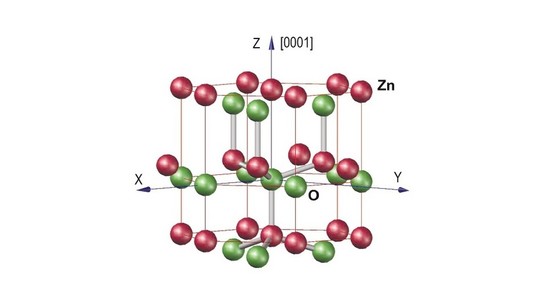Ural Federal University Experts Learn To Control Defects in Zinc Oxide
Scientists of the Ural Federal University have studied the structure of defects in zinc oxide and found out how to improve its properties. The information obtained and the technology created on the basis of it will strengthen the technological development of Russian enterprises and improve the quality and service life of equipment (smartphones, computers, TV sets, etc.), since zinc oxide has a good combination of electronic, optical and thermophysical properties and is used in optoelectronics. For example, it can be used to make chips and microprocessors. The results of the study will be published in the scientific journal “Physical Chemistry Chemical Physics”. The project was supported by the Ministry of Science and Higher Education of the Russian Federation under the “Priority 2030” program.
Zinc oxide is a crystalline substance that has a number of unique properties that make it important in the manufacture of optoelectronics and microelectronics. A natural feature of this material is the presence of defects – oxygen vacancies. This means that in some parts of the microstructure of the material, an oxygen atom is missing. By understanding how these defects affect certain properties, it is possible to control them and thus increase the efficiency of zinc oxide applications in practice.
“Oxygen vacancies can be in different charge states – neutral and positively charged – depending on the number of electrons trapped on these defects. Each state has a certain influence on the structure of the crystal lattice surrounding the defect, on the behavior of nearby atoms, and ultimately on the whole complex of practically important properties. Understanding the nature and structural and energetic state of defects, microscopic mechanisms of physical processes involving them allows us to reliably predict the functional properties of crystals, control them and, ultimately, ensure their effective technological application in the creation of new photonic and electronic devices for various purposes,” explains Anatoly Zatsepin, Full Professor of the UrFU Department of Physical Techniques and Devices for Quality Control.
The properties of zinc oxide crystals can be improved by irradiation or by doping, i.e. adding various impurities to the original substance. According to scientists, natural defects in zinc oxide can also be used to improve its properties, such as thermal and electrical conductivity. Selecting the right microstructure, taking into account the influence of defects, will significantly improve the performance of semiconductor devices and reduce the loss of useful signal.
“Zinc oxide can change the whole complex of physical properties very much due to different defects. The defects themselves have different microstructure, concentration and energy state, on which the vibrational motion of the lattice atoms depends – it can be either beneficial or harmful – depending on what type of device we use this material for. In order to increase the efficiency and durability of a particular device, we should select a certain type of charged or neutral defect in the desired structure of the material’s crystal lattice,” comments Alexey Kislov, Full Professor of the UrFU Department of Theoretical Physics and Applied Mathematics.
To conduct the study, the scientists used a combination of computer modeling techniques to create an ideal, defect-free zinc oxide crystal. The physicists then artificially removed an oxygen atom from the material’s crystal lattice. As a result, the electrons surrounding the oxygen vacancy began to change their behavior. Theory and experiments show that by varying the charge state of the vacancy, it is possible to obtain a crystal with specific thermal, electronic, and optical properties.
In the near future, the scientists will continue their research. Physicists will conduct experimental work dedicated to the study of zinc oxide defects in amorphous-crystalline, thin-film and nanostructured states.

